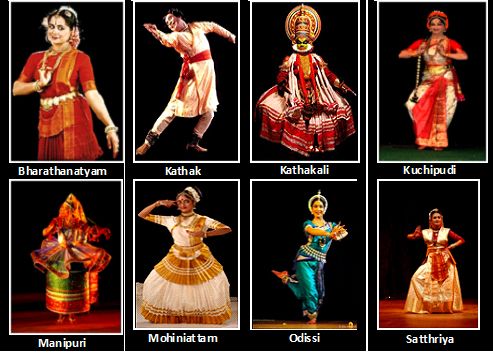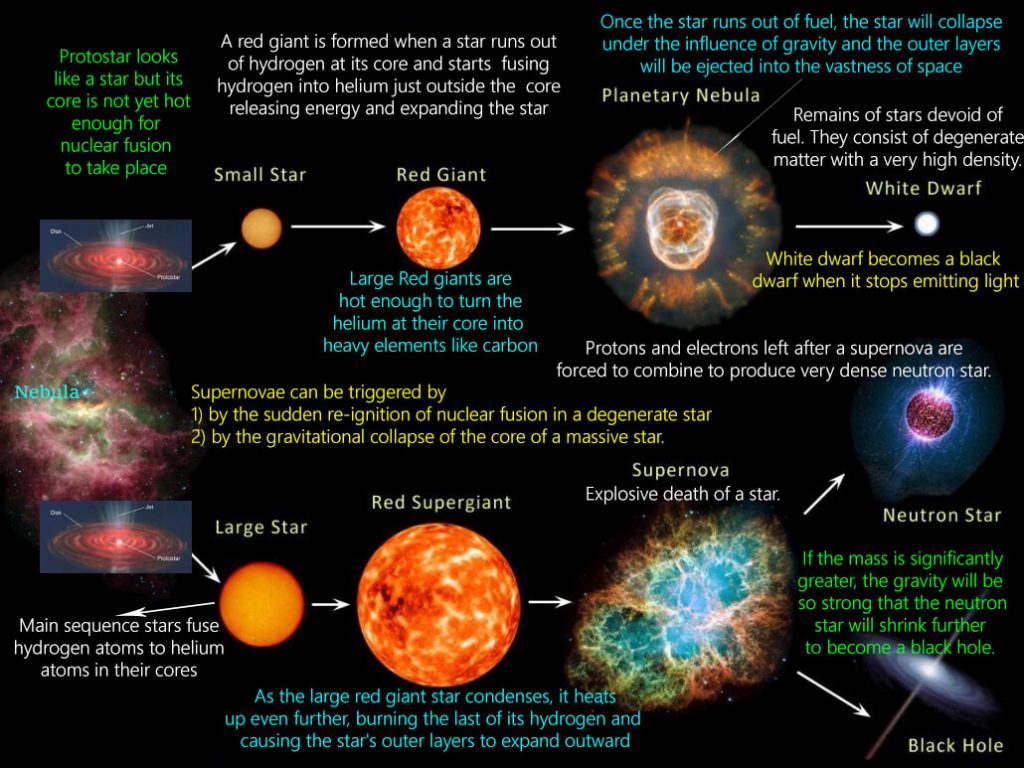Contents
- Films Division presents concluding part of NRITYANJALI – an ode to Indian Classical Dance.
- Jal Shakti Ministry assesses the progress made by Union Territory of Ladakh in implementation of ‘Jal Jeevan Mission’ with focus on Water Quality Testing.
- Eighteen more individuals declared as terrorists under the Unlawful Activities (Prevention) Act, 1967.
- Black Holes don’t move around sucking in objects like a vacuum cleaner: Director, IUCAA.
- PM interacts with beneficiaries of PM SVANIDHI Yojana from UP.
Films Division presents concluding part of NRITYANJALI – an ode to Indian Classical Dance.
Focus: GS 1 ; Indian culture will cover the salient aspects of Art Forms, literature and Architecture from ancient to modern times.
Why in News?
After the overwhelming response to the first part of Nrityanjali, an online festival of documentary films on the life and work of some of the leading Indian classical dance exponents, Films Division is presenting the concluding part of the festival where well-researched documentaries on the distinct styles, depth and nuances of some of the ancient and popular classical dances.
About Classical Dances of India;-
India is known for its rich cultural heritage. Diversification is the identity of the country. Indian dance is one of the most revered identities of our culture.
In India, dance forms can be broadly classified into 2 categories- Classical and Folk Dance form.
These dance forms have been originated from different parts of India as per the local tradition.
The classical dance form originated from the Natya Shastra, there are 8 classical dance forms in India as per the source and scholar.
The Natya Shastra is termed as 5th Veda i.e. Brahma Deva withdrew himself into an intense concentration of mind, recalled the four Vedas and created the fifth Veda called Natya Veda.
He took the lyrics from the Rigveda, music from Samaveda, the language of gestures and emotions from the Yajurveda and the aesthetic experience or Rasa from Atharvaveda.


The Cultural Ministry of India has included Chhau into the list of classical dances that makes a total of 9 classical dance form.
Excavations, inscriptions, chronicles, genealogies of kings and artists, literary sources, sculpture and painting of different periods provide extensive evidence on dance in India.
Contemporary classical dance forms have evolved out of the musical play or sangeet-nataka performed from the 12th century to the 19th century.
The Indian classical dances have two basic aspects – Tandava (movement & rhythm) and Lasya (grace, bhava & rasa).
The three main components are;-
Natya (the dramatic element of the dance i.e. the imitation of characters)
Nritta (the dance movements in their basic form)
Nritya (expressional component i.e. mudras or gestures).
The nine rasas are – Love, Heroism, Pathos, Humor, Anger, Fear, Disgust, Wonder and Peace.
The Natya Shastra written by Bharat Muni is the most prominent source for the Indian aestheticians for establishing the characteristics of the dances.
The 9 basic technicalities that are expressed in the classical dance are given below:-
Shringar: Love
Hasya: Humorous
Karuna: Sorrow
Raudra: Anger
Veer: Heroism
Bhayanak: Fear
Bibhats: Disgust
Adbhoot: Wonder
Shanta : Peaceful

CLASSICAL DANCE;-
The term “classical” was introduced by Sangeet Natak Akademi to denote the Natya Shastra-based performing art styles. These are described as below:-


Jal Shakti Ministry assesses the progress made by Union Territory of Ladakh in implementation of ‘Jal Jeevan Mission’ with focus on Water Quality Testing.
Focus: GS 2 ; Government policies and interventions for development in various sectors and issues arising out of their design and implementation.
Why in News?
In continuation of the mid-term review series on progress of implementation of Jal Jeevan Mission in States/ UTs, status of the mission in the Union Territory of Ladakh was reviewed through video conferencing. The Ministry of Jal Shakti is in the process of assessing the progress made by all the States and Union Territories to achieve the goal of universal coverage of tap water connections in rural households under Jal Jeevan Mission (JJM), the flagship programme of Union Government which aims to provide tap water connection to every rural home of the country by 2024.

Eighteen more individuals declared as terrorists under the Unlawful Activities (Prevention) Act, 1967.
Focus: GS 3 ; Security challenges and their management in border areas – linkages of organized crime with terrorism.
Why in News?
Under the strong and iron-willed leadership of the Prime Minister, Shri Narendra Modi, the Central Government had amended the Unlawful Activities (Prevention) Act, 1967 in August 2019, to include the provision of designating an individual as a terrorist. Prior to this amendment, only organizations could be designated as terrorist organizations.
The Union Home Minister, Shri Amit Shah has unequivocally reaffirmed the nation’s resolve to fight terrorism. By invoking the said amended provision, the Central Government designated four individuals in September, 2019 and nine individuals in July, 2020 as terrorists.

About The Unlawful Activities (Prevention) Act, 1967;-
The UAPA, an upgrade on the Terrorist and Disruptive Activities (Prevention) Act TADA (lapsed in 1995) and the Prevention of Terrorism Act – POTA (repealed in 2004) was originally passed in the year 1967.
Till the year 2004, “unlawful” activities referred to actions related to secession and cession of territory. Following the 2004 amendment, “terrorist act” was added to the list of offences.
The Act assigns absolute power to the central government, by way of which if the Centre deems an activity as unlawful then it may, by way of an Official Gazette, declare it so.

About The Unlawful Activities (Prevention) Amendment Bill 2019;-
The Unlawful Activities (Prevention) Amendment Bill, 2019 was introduced in Lok Sabha by the Minister of Home Affairs, Mr. Amit Shah, on July 8, 2019. The Bill amends the Unlawful Activities (Prevention) Act, 1967.
The Act provides special procedures to deal with terrorist activities, among other things.
Who may commit terrorism:-
Under the Act, the central government may designate an organization as a terrorist organization if it:
(i) commits or participates in acts of terrorism,
(ii) prepares for terrorism,
(iii) promotes terrorism, or
(iv) is otherwise involved in terrorism.
The Bill additionally empowers the government to designate individuals as terrorists on the same grounds.
Approval for seizure of property by NIA:-
Under the Act, an investigating officer is required to obtain the prior approval of the Director General of Police to seize properties that may be connected with terrorism.
The Bill adds that if the investigation is conducted by an officer of the National Investigation Agency (NIA), the approval of the Director General of NIA would be required for seizure of such property.
Investigation by NIA:-
Under the Act, investigation of cases may be conducted by officers of the rank of Deputy Superintendent or Assistant Commissioner of Police or above.
The Bill additionally empowers the officers of the NIA, of the rank of Inspector or above, to investigate cases.
Insertion to schedule of treaties:-
The Act defines terrorist acts to include acts committed within the scope of any of the treaties listed in a schedule to the Act.
The Schedule lists nine treaties, including the Convention for the Suppression of Terrorist Bombings (1997), and the Convention against Taking of Hostages (1979). The Bill adds another treaty to the list. This is the International Convention for Suppression of Acts of Nuclear Terrorism (2005).
Black Holes don’t move around sucking in objects like a vacuum cleaner: Director, IUCAA.
Focus: GS 3 ; Awareness in the fields of IT, Space, Computers, robotics, nano-technology, bio-technology and issues relating to intellectual property rights.
Why in News?
Director, Inter University Centre for Astronomy and Astrophysics, Pune, Somak Raychaudhury began his Nehru Science Centre, Mumbai lecture by busting some myths about Black Holes. NSC Mumbai, Ministry of Culture’s online lecture on ‘The Nobel Prize 2020: Physics’ – Unravelling the Mythical Black Holes by Somak Chaudhury, focussed on how the contribution of different scientists over different periods of time, right from Isaac Newton till date, have resulted in a better understanding of the black holes.
This year, three scientists have won the 2020 Nobel Prize in Physics for their contribution in understanding Black Holes: Roger Penrose (for the discovery that black hole formation is a robust prediction of the general theory of relativity), Andrea Ghez and Reinhard Genzel (for the discovery of a supermassive black hole at the centre of our galaxy).
“Unlike being portrayed in many science-fiction movies, Black Holes don’t move around sucking in objects like a vacuum cleaner. If the Sun turns into a black hole today, it won’t suck the other planets; the earth will still be revolving around the sun as if nothing happened, except that there won’t be any light and that the earth will turn very cold , but still we will be revolving.”
He also mentioned about Laser Interferometer Gravitational Wave Observatory – India and the role of India in the findings and research of black holes. “India is part of the biggest research in the world that is working in the field of black holes. The construction of the LIGO is coming up in Hingoli district, Maharashtra. Land has been acquired for this purpose and work has already started”, he added.
About BLACK Holes;-
A black hole is a place in space where gravity pulls so much that even light can not get out. The gravity is so strong because matter has been squeezed into a tiny space, this can happen when a star is dying.
Black holes are of four types, classified on the basis of their mass – Stellar mass black holes, Mid- size black holes ,Super Massive black holes and Miniature black holes.
A black hole has two basic parts: the Singularity and the Event Horizon.
The “Singularity” is at the centre and is where the mass resides.
It was Stephen Hawking and R. Penrose who wrote the first paper on Singularities”.

The term ‘black hole’ was coined in the mid-1960s by American Physicist John Archibald Wheeler.
Black hole refers to a point in space where matter is so compressed as to create a gravity field from which even light cannot escape.
Black-holes were theorized by Albert Einstein in 1915.
Life Cycle of a Star;-


Event Horizon;-
There is a region of space beyond the black hole called the event horizon. This is a “point of no return”, beyond which it is impossible to escape the gravitational effects of the black hole.
The scientists at Event Horizon Telescope Project have released the first-ever image of a Black Hole (more precisely, of its shadow) , i.e. below attached image.

Event Horizon Telescope Project;-
EHT is a group of 8 radio telescopes (used to detect radio waves from space) located in different parts of the world.
PM interacts with beneficiaries of PM SVANIDHI Yojana from UP.
Focus: GS 2 ; Welfare schemes for vulnerable sections of the population by the Centre and States and the performance of these schemes; mechanisms, laws, institutions and Bodies constituted for the protection and betterment of these vulnerable sections.
Why in News?
The Prime Minister Shri Narendra Modi interacted with beneficiaries of PM SVANIDHI Yojana from Uttar Pradesh through video conferencing.



